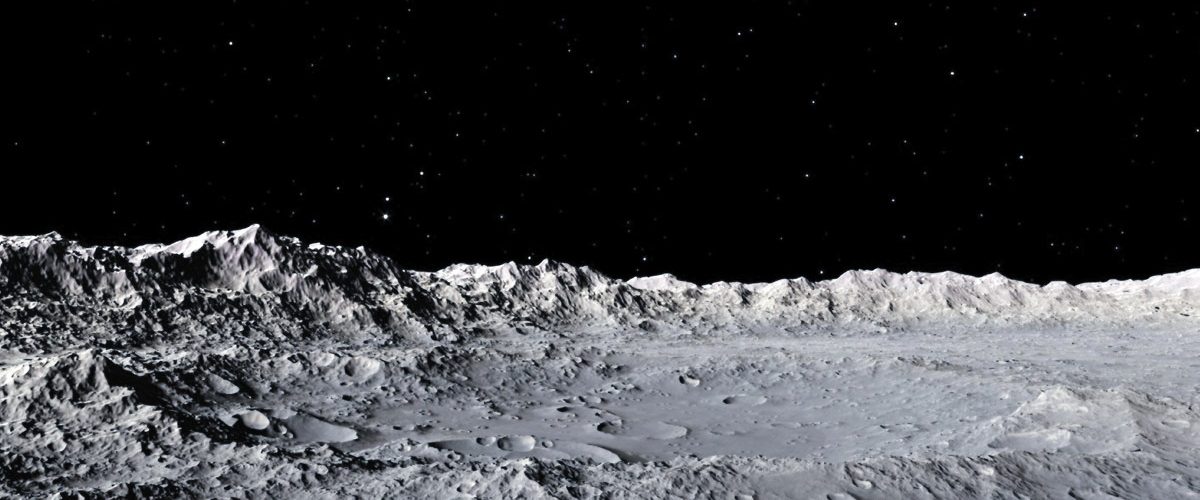by Benjamin Cameron
Distant stars shimmer in the depths of space as you peer out of the window in your personal quarters aboard Luna 3. You’ve seen the stars before, but never from this vantage point, and it’s mesmerizing. Your eyes drift downwards to the silver surface of the moon, growing larger now as the rocket approaches. The seas of moondust and speckled craters are beautiful, but what’s startling is the expanse of movement and light coming into view. A large circle at the center, with roads extending outwards in an orderly geometry that seems out of place within the lunar wilderness. It’s Moon Valley, the first city on the moon, and you’re just one of 10,000 space tourists that it will host this year. According to the start-up ispace, this could be a snapshot of your life as soon as 2040.
Renewed interest in lunar exploration is reaching fever pitch as space companies reveal ambitious plans for the coming decades. Young space start-ups such as Offworld, Moon Express, and ispace are looking to exploit lunar resources in order to fuel expansion into the solar system, with many envisioning a future of lunar bases, distant space stations, and in general a kind of “new space renaissance.” Optimistic entrepreneurs aren’t the only ones with their eyes on the moon; even NASA is preparing to return to the moon within the next few years to map resources. They are hoping to create a sustainable, manned lunar base within a decade, which will be dependent on lunar resources. But just what are these resources, and how will they provide the foundation for the new era in space promised by these companies?
There are several primary resources that space companies hope to extract from the moon. Oxides in the lunar surface material could be used to create breathable oxygen for astronauts and create 3D structures to protect against micrometeorites and deadly cosmic radiation. Rare Earth metals could potentially be extracted as well, providing materials for advanced electronics (it’s also believed that Helium-3 could be mined for use in “yet-to-be-built” fusion reactors).
Without question, though, the most important resource on the moon, and at the core of every ambitious plan for future space infrastructure, is lunar ice. Lunar ice is known to exist in vast quantities within deep craters at the moon’s poles, untouched by sunlight for millions of years. Space agencies and companies eyeing lunar resources expect this ice to be fairly easy to extract robotically. NASA is planning the construction of a space station (“The Gateway”) to orbit the moon in 2024, while ESA’s planned Hercules mission will explore the feasibility of collecting lunar ice resources. Both projects will advance our understanding of and capability to harvest lunar ice. Additionally, many space startups plan to explore and harvest lunar resources using rovers within the coming decade. All of this preliminary investment into robotically collecting lunar ice could greatly benefit future manned missions to the moon, as these missions could potentially land at a “rudimentary base with preliminary supplies,” cutting down on mission costs and jumpstarting the productivity of the mission.
Across all of the new space mission plans and future projections, lunar ice is held to be the central resource that will allow space projects to flourish, which will in turn boost the global economy and technological advancement. But just how will the moon’s ice resources benefit future space missions? The most obvious way to use lunar ice is to boil it off to use for drinking water, or for cultivating fresh food. It could also be electrolyzed using the sun’s energy in order to extract breathable oxygen, as well as for protection against cancer-inducing cosmic radiation. And it doesn’t end there; the hydrogen and oxygen contained in lunar ice could even be used to form rocket fuel. This would allow the creation of lunar refueling stations where rockets from Earth could take on additional fuel to prepare for further travels into the solar system. This would provide enormous savings given the prohibitive cost of carrying that fuel off of the Earth’s surface. These savings would make such rocket missions more economical and therefore further boost expansion into space.
It can be easy to get carried away in the midst of these optimistic visions of a space renaissance, so it’s worth taking a step back to hear what the skeptics have to say about lunar mining. For starters, some scientists dispute whether key resources on the moon, such as heavy metals, are even minable. When a planetary body is still partially molten, heavy elements sink to the center of the body while lighter materials rise to the top. This means that many of the moon’s valuable metals are located at or near its core, where they are nearly impossible to access. Also, there is still a large degree of uncertainty regarding the amount of various lunar resources that are actually present on the moon. According to the Washington Post; “There could be enough helium-3 to power the Earth for 10,000 years, or there might not be enough to ever make commercial mining profitable, even if the entire lunar surface were being mined.” So while most scientists are confident about the availability and importance of lunar ice, there are still disagreements regarding the feasibility of mining other materials that space companies are after.
There are some issues with lunar mining that go beyond the nuts and bolts of resources and extraction, however. For one, there is the legal question; is it even legal to mine the moon? Who owns, or can own, lunar property? According to the 1967 United Nations Outer Space Treaty, nations cannot claim ownership of the moon. There is no mention, however, of the question of private ownership, meaning that lunar mining companies wouldn’t be violating the treaty in an obvious way by using the lunar surface for commercial ventures. It’s a legal question that no one really has the answer to at the moment. NASA’s Jet Propulsion Laboratory perhaps puts it best: “Until we get there and fight it out, we’ll just have to wait and see.”
One final question to consider as we look ahead to our future in space is whether it is ethical to mine the moon. The moon has been a major fixture in human culture since the beginning of our species. If there is any celestial body that deserves respect and consideration, it’s our moon. Considering our track record when it comes to treating other major natural environments, such as our rainforests, with care and respect, it’s very important that we learn from our mistakes and plan ahead for lunar mining. According to space archeologist Dr. Alice Gorman, one solution is to implement an environmental impact process for lunar industry. This could ensure that lunar companies meet ethical guidelines and operate according to regulations which protect the moon from over exploitation and other issues. According to Gorman, when our species began exploiting and manipulating the Earth millions of years ago, “we didn’t know what we were doing.” As we approach a new age in space, in which space companies will vie for lunar resources and industry, it’s worth heeding her warning: “We have no excuse now.”










Add comment